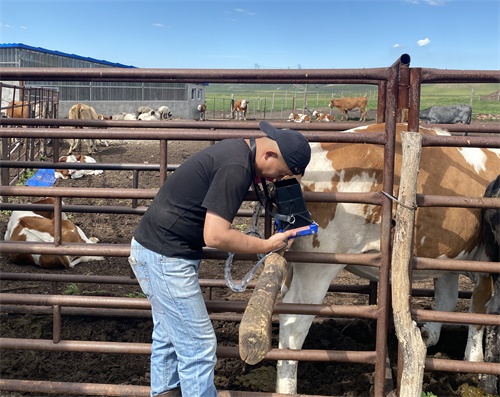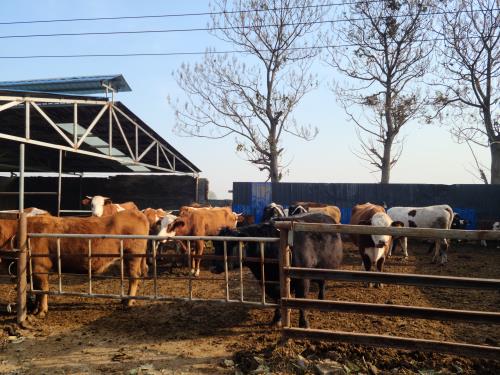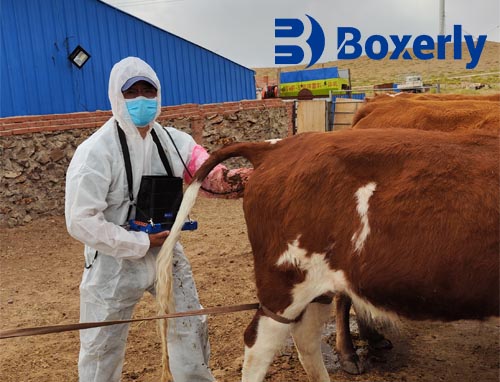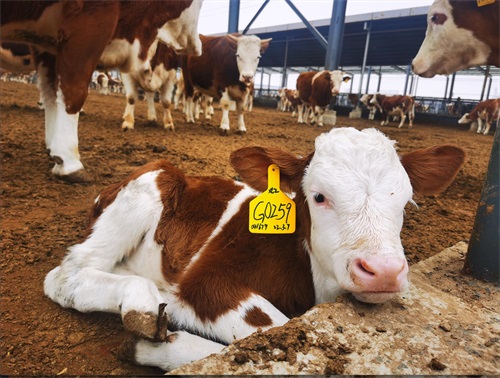Ovarian cysts silently impact herd fertility and farm profits. They often cause irregular estrus cycles, reduced conception rates, and delayed return to normal reproduction. Farmers don’t want to stress cows with unnecessary handling, but they also need to identify cystic cows early. The challenge is combining accurate detection with minimal disruption. This article focuses on practical strategies farmers can implement immediately, focusing on observation, strategic testing, and selective ultrasound scanning to manage ovarian cysts efficiently.

Why Early Detection Matters
Ovarian cysts can linger unnoticed for weeks, silently reducing reproductive performance. One cysty cow may delay conception, increasing open days and feed costs. Multiple cystic cows in a herd magnify losses. Early detection reduces unnecessary inseminations, avoids prolonged treatment, and prevents secondary complications like uterine infections. The key for farmers is timing: post-calving cows are vulnerable, so knowing when and how to check is more valuable than a blanket approach.
Observation and Record-Keeping Strategies
Tracking estrus behavior daily is low-cost and low-stress. Use heat detection aids, such as tail paint or activity monitors, to identify cows that repeatedly fail to show standing heat. Cows with inconsistent or prolonged heat are prime candidates for further testing. Recording milk yield, appetite, and behavior also helps flag potential cystic cows. The focus here is patterns, not single events, which allows early identification without physically disturbing the cow.
Hormonal Monitoring: Milk Progesterone Screening
Instead of invasive exams, milk progesterone analysis offers objective insight. Progesterone patterns reveal if a cow is stuck in a luteal phase or failing to ovulate, which are indicators of cystic activity. Regular milk sampling—weekly for high-risk cows in the first 6–8 weeks postpartum—can identify hormonal imbalances before they manifest as visible reproductive issues. Using existing milk lines for sampling minimizes labor and handling stress.

Strategic Use of Ultrasound
While ultrasound requires equipment and skill, it provides precise, non-invasive evaluation. Rather than scanning every cow, focus on cows flagged by observation or progesterone tests. Ultrasound identifies follicular vs luteal cysts, ovarian size, and can reveal early concurrent uterine complications. This targeted approach reduces stress and maximizes cost-efficiency. For larger herds, portable scanners allow veterinarians or trained staff to quickly assess high-risk cows without moving them extensively.
Comparison of Detection Methods
| Method | Detection Focus | Stress to Cow | Practical Tips |
|---|---|---|---|
| Observation + Heat Records | Estrus irregularities, prolonged or silent heat | Minimal | Record daily; highlight repeated heat failures |
| Milk Progesterone Testing | Hormonal imbalance, ovulation failure | Low | Sample high-risk cows weekly; integrate into milk pipeline |
| Targeted Ultrasound | Follicular vs luteal cysts, ovarian morphology | Low (non-invasive) | Scan only flagged cows; focus on high-risk time windows |
Minimizing Stress While Checking Cows
Cows are sensitive to handling. Avoid moving them unnecessarily. Perform milk sampling during routine milking, observe behavior from the pen, and limit ultrasound to a few minutes per cow. Calm handling, minimal restraint, and predictable routines reduce cortisol spikes that can interfere with reproductive recovery. Stress management is as critical as early detection when managing ovarian cysts effectively.
Treatment and Herd Management Considerations
Once cysts are identified, discuss treatment options with a veterinarian. Hormonal therapies can be administered efficiently for affected cows, restoring cyclicity and improving conception rates. High-risk cows can be segregated for closer monitoring, reducing the chance that undetected cysts delay breeding. Tracking treated cows and monitoring outcomes completes the loop, ensuring that your detection efforts translate into measurable reproductive improvement.
Conclusion
Detecting ovarian cysts in dairy cows without stressing them is achievable by combining careful observation, strategic hormone monitoring, and targeted ultrasound scanning. Focus on cows showing abnormal estrus behavior or flagged by progesterone results, and use ultrasound selectively. This approach maximizes herd reproductive performance, minimizes unnecessary handling, and keeps cows healthy. Early, targeted detection is the most practical strategy for maintaining fertility and profitability in modern dairy operations.
link: https://www.bxlimage.com/nw/1299.html
tags: ovarian cysts cows dairy fertility monitoring low-stress reproductive checks progesterone milk test ultrasound cow postpartum cow care herd reproductive management








